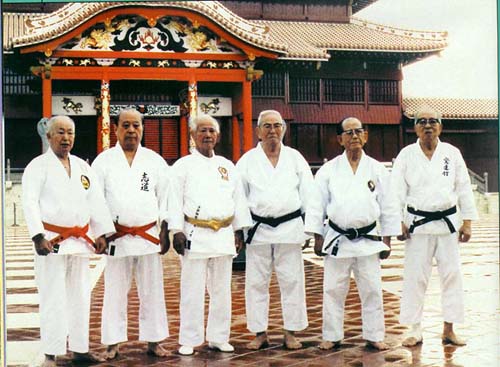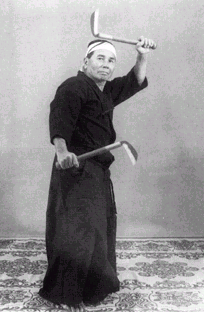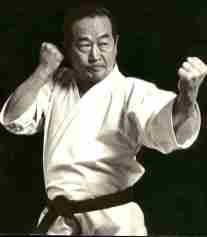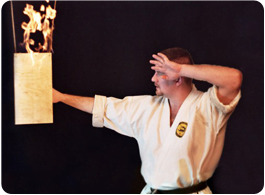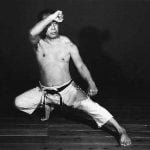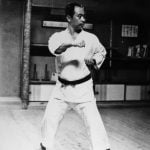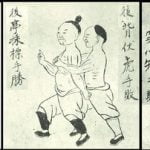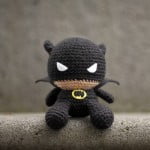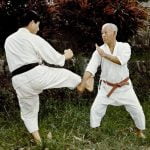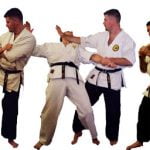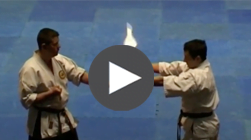Ryukyu kingdom had strong culutural, trading and political relations with China for centuries. Also, 1609. when samurai Satsuma clan invaded Okinawa, Japan secured its presence.
The begining – ancient masters
It is reasonable to presume that Okinawa karate developed during XVII and XVIII century. There are very few written testimonies and we have to base this on oral tradition. Earliest stories remembers masters such as: “Chinese fist” Sakugawa, Kushanku and Yara from Chatan …. all of them lived during XVIII century. In XIX century, most famous masters were: Matsumura the Warrior and Higashonna the Lion. During this period karate was practiced in secrecy, individually, from master to teacher. Persons who learned karate were almost all court officials or have had family relations to Shuri court. Old karate was practiced exclusively as method of self-defense, each master knew only one or few katas and each kata was self-standing method of self-defense. They all had an opportunity to travel to Fuchow (China) and to learn chuan fa methods.
Birth of modern karate (1901.)
Modern karate was developed by master Itosu. Itosu learned karate from Matsumura. His goal was to remove shadow of secrecy and to include karate into Okinawa schools. Therefore, he changed karate. He promoted kata as suitable method of practice, since it was safe and appropriate for class. All dangerous techniques were modified (eye poke, groin kick, throat strike…) so that school children can practice safely. Itosu devised Pinan katas, combining modified parts of old karate katas.
Gichin Funakoshi was Itosu’s student. He continued with reform of training methodology and promoted karate to Japan through Japanese universities (see Japan karate). Chinese origin of karate was erased and “To–te” (China – hand) was named “Kara-te” (Empty – hand). Gichin also introduced white karate gi and colored belts.
Pioneers (from 1901. to world war II)
Karate flourished in this period. There were many individuals who helped promotion of modern karate: Yabu Kentsu, Hanashiro Chomo, Chotoku Kyan, Kyoda Juhatsu, Chojun Miyagi, Kenwa Mabuni, Kanbun Uechi, Choki Motobu…
Styles
Modern karate quickly becomes very popular. There were many schools and instructor and soon they adopted term “ryu”, as it was common practice in Japanese budo. However, we can’t talk about different “styles”. “Ryu” is more like tradition or heritage. Many schools emerged and some of them are:
Goju ryu – Chojun Miyagi
Uechi ryu – Kambun Uechi
Shotokan – Gichin Funakoshi
Shito ryu – Kenwa Mabuni
Motobu – Motobu Choki
Taira kobudo – Taira Shinken
After II World War
When II world war was finished Okinawa was in ruins. Many high-ranking masters died, all karate groups were shattered and it took several decades for karate on Okinawa to rebuild. This enabled Japanese karate instructors to take leading position. Through Japan, karate was popularized on global level and Okinawa almost had no influence on karate development. Although, Japanese karate was not more than an empty shell of old traditional karate, no one knew this and karate grew. Many schools emerged – shotokai, wadoryu, kyokushin…. and finally sport karate. Personally I think that this is very sad development for legendary “China hand”. Sport karate quickly lost its popularity, since it was not so commercial as Full contact, Maui Thai, UFC and F1. However, although karate lost on its popularity, last few years quality is increasing due to the influences from Okinawa.
Matsubayashi ryu – Shoshin Nagamine
Japanese karate
Masatoshi Nakayama, Oyama Masutatsu,
Gogen Yamaguchi, Hironiri Ohtsuka
Ishin ryu – Tatsuo Shimabuku
Ryueryu karate – Kenri Nakaima
Matayoshi kobudo – Matayoshi Shinko
